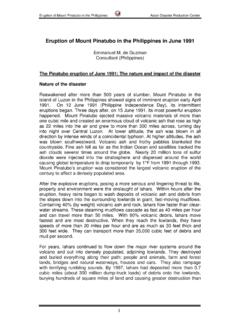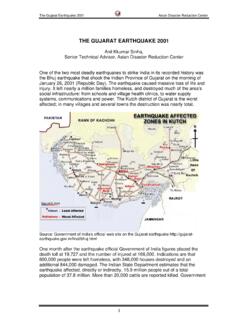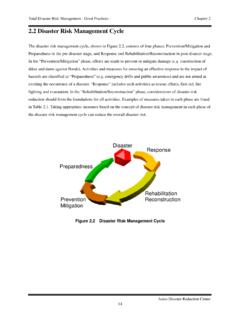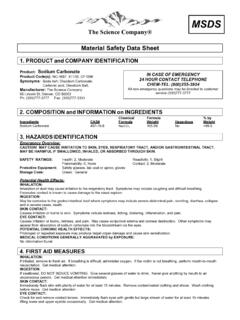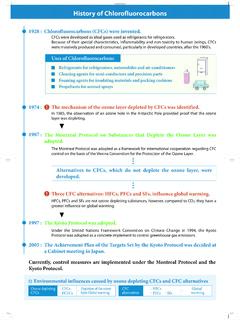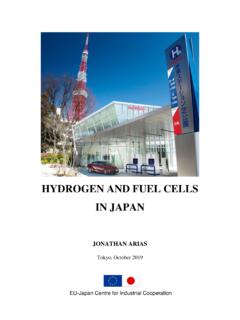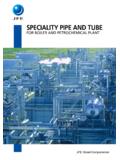Transcription of EMERGENCY RESPONSE MANAGEMENT IN JAPAN
1 ASIAN DISASTER REDUCTION CENTER Visiting Researcher Program FY2011A EMERGENCY RESPONSE MANAGEMENT IN JAPAN FINAL RESEARCH REPORT Emin NAZAROV Crisis MANAGEMENT Center Ministry of EMERGENCY Situations of the Republic of Azerbaijan Disclaimer This report was compiled by an ADRC visiting researcher (VR) from ADRC member countries. The views expressed in the report do not necessarily reflect the views of the ADRC. The boundaries and names shown and the designations used on the maps in the report also do not imply official endorsement or acceptance by the ADRC. 2 Table of Contents ACKNOWLEDGEMENT .. 3 BACKGROUND .. 4 1. DISASTER PROFILE OF JAPAN .. 5 2. DISASTER MANAGEMENT SYSTEM OF JAPAN .. 7 LEGAL BASIS .. 7 OVERVIEW OF THE DISASTER MANAGEMENT SYSTEM .. 11 3.
2 EMERGENCY RESPONSE MANAGEMENT AT THREE LEVELS .. 14 OUTLINE OF EMERGENCY RESPONSE SYSTEM .. 14 NATIONAL LEVEL .. 15 FIRE AND DISASTER MANAGEMENT AGENCY .. 15 MINISTRY OF HEALTH, LABOUR AND WELFARE .. 17 MINISTRY OF LAND, INFRASTRUCTUE, TRANSPORT AND TOURISM .. 18 JAPAN METEOROLOCICAL AGENCY .. 19 JAPAN COAST 21 SELF-DEFENSE FORCES (SDF) .. 24 PREFECTURE LEVEL .. 25 Case study: Hyogo Prefecture Disaster MANAGEMENT System .. 26 MUNICIPAL LEVEL .. 29 Case Study Kobe Fire Department .. 31 MUNICIPAL LEVEL VOLUNTARY EMERGENCY RESPONSE TEAMS .. 32 4. EMERGENCY RESPONSE BY OTHER ORGANIZATIONS AND TEAMS .. 33 DISASTER MEDICAL ASSISTANCE TEAMS .. 33 JAPAN MEDICAL ASSOCIATION TEAMS JMAT .. 35 JAPAN RED CROSS SOCIETY .. 36 BUILDING RESEARCH INSTITUTE .. 37 NHK JAPAN BROADCASTING COMPANY.
3 38 Case Study: Osaka Gas Engineering Co., Crisis MANAGEMENT System.. 39 5. INTERNATIONAL EMERGENCY RESPONSE - JAPAN DISASTER RELIEF TEAM (JDR) .. 42 CONCLUSION .. 43 BIBLIOGRAPHY .. 45 3 ACKNOWLEDGEMENT It is great pleasure for me to express my deepest appreciation and gratitude to all ADRC staff for providing me with the opportunity to participate in Visiting Researcher Program 2011 and invaluable assistance during the course. Thanks to you I have been able to upgrade and enrich my skills and knowledge on disaster risk reduction and have had a great opportunity to get to know JAPAN , its history, culture and traditions. For me Visiting Researcher Program was quite a memorable experience, since it was both educational and exciting. This would have not been possible without your priceless help and support.
4 I am sincerely grateful to the Ministry of EMERGENCY Situations of the Republic of Azerbaijan for making possible my participation in this program and in particular, to the Crisis MANAGEMENT Center for their constant support and guidance throughout the program. This has been very helpful and contributing factor for successful completion of my research. I truly hope in the future relations between the MES and ADRC will keep on prospering. Special thanks go to Ms. Kodama who during the entire period of the program has been rendering her help and assistance and accompanying us in most friendly and kind manner. It must be particularly noted that she has made her support available in a number of ways by being sensitive and responsive not only to every single issue related to our program, but also to our cultural and entertainment activities.
5 It is her great merit that we have benefited the program in the most effective way and enjoyed our staying in JAPAN . I would like to avail myself of this opportunity to express my great thanks to all professors and organization representatives who conducted for us presentations and lectures within the framework of ADRC arranged activities and DRR program for Central Asia and Caucasus countries organized by JICA. Knowledge attained through these sessions was the key to our understanding of many aspects of the research area and the lecture and presentation materials served as the main information source while writing it. I also would like to thank my visiting researcher colleagues Mr. Sisira Wanninayake, Mrs. Anna-lisa Dumaguing ORALLO, Ms.
6 Surina binti Othman for their co-operation and support throughout the program and wish them success in their future endeavors and undertakings. During four months spent in JAPAN our relations have not been confined to only being mere colleagues, but we have been able to establish and maintain friendly relations. Last but not the least, I would like to thank everyone who has contributed to the realization of this program and supported it, including my family members and friends and wish them to make best out of life. 4 BACKGROUND EMERGENCY MANAGEMENT , as it is defined by FEMA, is the managerial function charged with creating the framework within which communities reduce vulnerability to hazards and cope with disasters . Four phases and eight core principles of EMERGENCY MANAGEMENT is distinguished: 1) Mitigation/Prevention, 2) Preparedness, 3) RESPONSE 4) Recovery.
7 RESPONSE is defined as the actions taken to save lives and prevent further damage in a disaster or EMERGENCY situation. RESPONSE is putting preparedness plans into action. RESPONSE activities may include damage assessment, search and rescue, fire fighting, and sheltering victims. RESPONSE activities take place during an EMERGENCY . As to the principles, the EMERGENCY MANAGEMENT should be Comprehensive, Progressive, Risk-driven, Integrated, Collaborative, Coordinated, Flexible and Professional. Principle of being coordinated implies that EMERGENCY managers synchronize the activities of all relevant stakeholders to achieve a common purpose . Typical requirements and attributive characteristics of EMERGENCY RESPONSE make it rather different from other phases.
8 Whereas, implementation of other phases depends on proper planning and elaboration, EMERGENCY RESPONSE phase is characterized by such features as high uncertainty, limited timeframe, site accessibility problems, and necessity for decision-making, mobilization of forces and resources and quick RESPONSE . The phase deals with direct or indirect, natural or technical hazard to human life, infrastructure, industry and environment. Although to various extent every single country is exposed to natural and technical hazards, thus, proper and comprehensive MANAGEMENT of the RESPONSE activities it the matter of saving lives, environment, economy and national security. Depending on its national hazard profile, geographical conditions and administrative organization every various countries and regions has established tailored EMERGENCY MANAGEMENT system.
9 Once system is in place, functional mechanism of EMERGENCY RESPONSE - coordination of RESPONSE activities and communication system are definitive factors. Destructive implications of recurring natural disaster forced JAPAN to enhance its EMERGENCY MANAGEMENT system over time. In doing so, along with organizational changes JAPAN has been integrating and latest technological advancements for disaster MANAGEMENT purposes. Today, it represents one of the most holistic disaster MANAGEMENT systems in the world. The purpose of the research is to elaborate detailed and holistic view of the EMERGENCY RESPONSE system of JAPAN as constituent and integral element of the entire EMERGENCY MANAGEMENT system through the conduct of comprehensive study of EMERGENCY RESPONSE related government bodies and public organizations.
10 5 1. DISASTER PROFILE OF JAPAN Historically, destructive natural disasters have posed greatest challenge for Japanese society. Unfavorable geographical, topographical and meteorological conditions of the country have made it one of the most disaster prone countries in the world. Although its territory accounts merely for the 0,25 % of the planet s land area, JAPAN is subject to about 20,5 % earthquakes with the magnitude 6 or more and 7 % the world s active volcanoes is located on its territory. The most frequent natural hazards in JAPAN are earthquakes, tsunamis, typhoons, volcano eruptions, floods and landslides. Occasional torrential rains and heavy snows are another challenge for the country. The high number of earthquakes, tsunamis and active volcanoes are the conditioned by the fact that territory of JAPAN forms the part Circum-Pacific Seismic Belt which is sometimes called as Pacific Ring of Fire.

